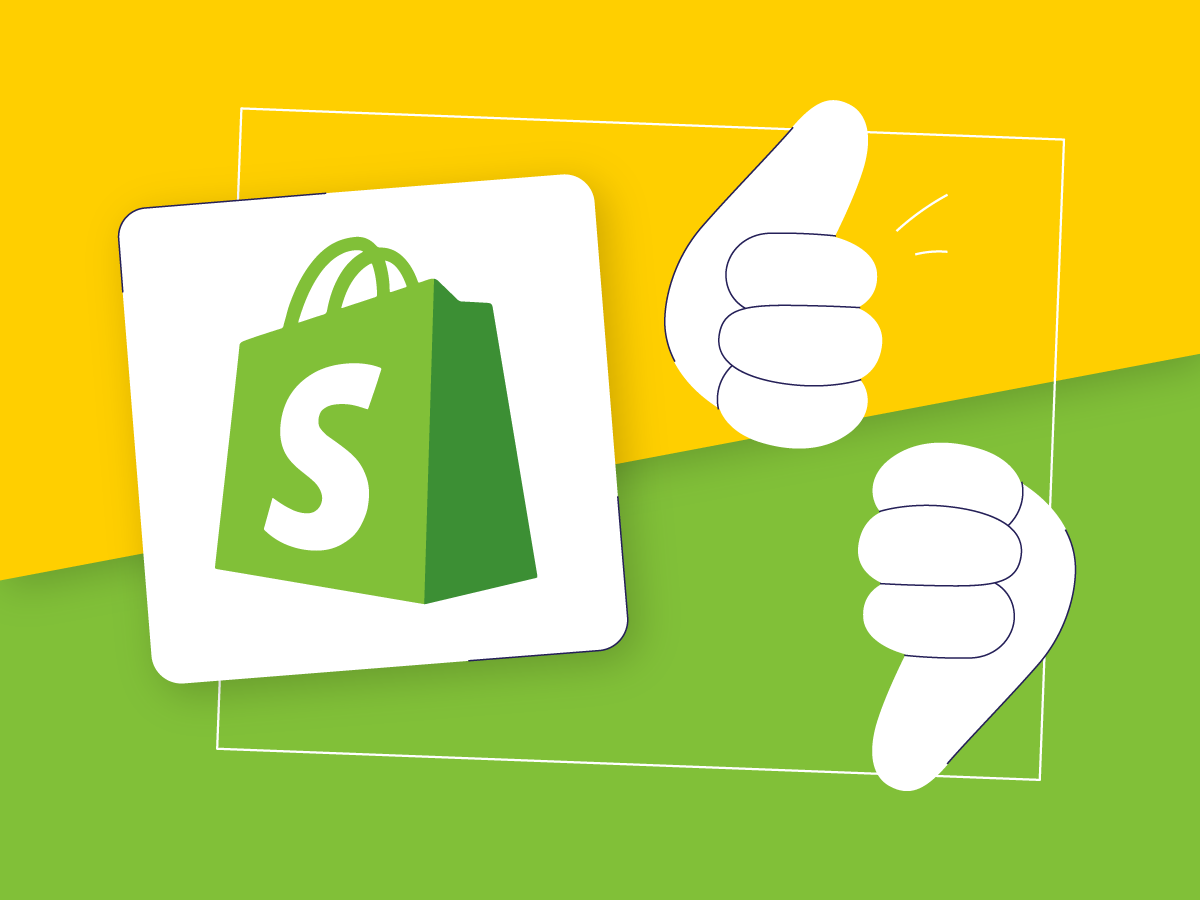When it comes to choosing an e-commerce platform, it’s like picking the perfect foundation for your online business. It’s the base that will determine how your store grows and what it can achieve. Two of the biggest names in the e-commerce world are WooCommerce and Magento (now Adobe Commerce). Both are powerful platforms, but they cater to different target audiences and offer distinct pros and cons.
WooCommerce, a WordPress plugin, powers a significant part of e-commerce stores. According to BuiltWith, it’s used by over 5 million active websites. Magento is famous for its robust features and flexibility. It’s the ultimate choice for many enterprise-level businesses.
In this article, we’ll delve deeper into WooCommerce vs. Magento, so you can decide which one is best for your company.
Overview of Magento and WooCommerce
The debate between WooCommerce and Magento is an ongoing one, with strong arguments on both sides. The best way to choose between them is to weigh the pros and cons of each platform.
An introduction to Magento by Adobe Commerce
Magento is an open-source content management system (CMS) designed for e-commerce. It was introduced in 2007 and has gained a solid reputation since then. Adobe bought it in 2018, and it also goes by “Adobe Commerce.” This platform includes two versions: Magento Open Source and Adobe Commerce.

Presently, they hold an 8% market share in the e-commerce sector. The company boasts over 25,000 active users and generates an annual gross sales volume exceeding $50 billion.
Magento’s strength lies in its customizability and ability to scale with business growth. It has a wide range of features, including out-of-the-box functionalities, the ability to host unlimited products, hundreds of free extensions, API integrations, and a powerful theming and layout system. However, it may not be the most beginner-friendly platform and requires a significant learning curve.
Magento 2 is trusted by over 250,000 merchants and is ranked among the top seven most popular e-commerce platforms. It has a significant market share, with over 700,000 websites created using Magento, and has been adopted by renowned brands like HP, Nike, and Coca-Cola.
An introduction to WooCommerce
WooCommerce, the popular e-commerce plugin for WordPress, has emerged as a formidable force in the online retail landscape. In 2023, it held a commanding market share of nearly 39% in the global e-commerce market. This significant share reflects the platform’s widespread adoption by businesses of all sizes, from startups to established enterprises.

Since its inception in 2011, WooCommerce has contributed to creating a total of 13.75 million sites. WooCommerce’s reach extends far beyond national borders, hosting over 3.5 million websites across the globe.
WooCommerce’s popularity is further evident in its dominance as the most widely used e-commerce platform on WordPress. With over 567 themes available in the WordPress.org theme directory, businesses have a wealth of options to choose from.
Magento vs WooCommerce: comparison
In the realm of e-commerce platforms, finding the perfect match for your unique business needs is crucial. Simply relying on a friend’s recommendation or opting for a commonly known CMS won’t suffice. A thorough analysis of your expectations is paramount. The notion of a one-size-fits-all solution is a myth.

The same principle applies when comparing Magento and WooCommerce. Without understanding your business, declaring a clear winner is impossible. However, we can provide a detailed comparison of their distinctive features to help you make an informed decision and select the ideal CMS.
Extensions & plugins
E-commerce websites are enhanced by extensions, which add features to online stores. Magento and WooCommerce are well-known for their extensive add-ons that extend website functionality and improve its appearance.
Magento has a strong community of developers, agencies, and freelancers, which has resulted in a wide range of paid and free third-party extensions. Magento Marketplace offers 4000+ extensions like accounting & finance, marketing, sales, payment & security, reporting & analytics, and customer support.

WooCommerce offers hundreds of free and premium extensions, covering logistics, technology, and marketing. You can customize your store regarding products, management, marketing, payments, shipping, enhancements, and subscriptions. These extensions are easily integrated into WooCommerce.

WooCommerce is powered by WordPress, providing access to over 60,000 free WordPress plugins and themes. This allows you to customize your online store further.
Performance
When comparing Magento vs WooCommerce speed, both platforms provide satisfactory accessibility. If we are talking about speed, then Magento outperforms WooCommerce with faster loading times.
WooCommerce has relatively high availability, similar to Magento, but its response time is notably slower. The average page load time across all sites is 776 milliseconds, with the cart page taking 1.32 seconds to load.
On the other hand, Magento exhibits stability, achieving an average availability rate of 99.71%, even with high traffic (3000 visitors per day). However, its speed is not as impressive, with an average page load time of 665 milliseconds at high availability. While not exceptional, this speed does not discourage users.
Security
More than half of consumers would abandon a website that lacks an SSL certificate, emphasizing the importance of security in e-commerce. Both WooCommerce and Magento offer advanced security measures through extensions and manual adjustments. Although no platform is entirely secure, Magento stands out by providing dedicated security patches to its users.
SSL safeguards personal information, while PCI-DSS enables secure credit card processing. Magento and WooCommerce are self-hosted platforms, requiring the merchant to manage these security measures.
WooCommerce presents a higher level of technical risk due to its widespread usage. WordPress’s popularity makes it a frequent target of attacks. Installing security patches is easier with WordPress than with Magento, which may require specialists.
Magento 2 offers two-factor authentication and automatic PCI compliance. Regular security patches and software updates enhance security further. We’ve prepared 10 Magento security tips for you in our article.
The downside is that applying Magento security patches can be challenging, especially for e-commerce beginners. This leads to a significant number of outdated Magento stores. That’s why we recommend contacting a dedicated Magento provider that will ensure your e-store will be up-to-date.
WooCommerce requires manual installation of PCI-DSS and SSL certificates, making it less robust compared to Magento.
Marketing & SEO
Effective marketing is crucial for businesses to reach their target audience, increase sales, and establish brand recognition. For e-commerce, SEO and content play a pivotal role in their marketing strategy. When choosing an online store platform, it’s important to consider how it supports SEO and blogging.
WooCommerce and Magento offer robust marketing capabilities, allowing users to showcase their products and services to customers. Both platforms provide a wide range of SEO and marketing features.

WooCommerce, as a plugin for WordPress, inherits all of WordPress’s advanced blogging functionalities, making it an excellent platform for content marketing campaigns. It eliminates the need for extra integrations to publish blog posts, as it comes equipped with a powerful blogging feature.
In addition, shortcodes allow you to easily insert various elements into landing pages and blog sites, improving the user experience.
Customer support
Both Magento and WooCommerce have extensive communities that provide help and resources.
WooCommerce offers a public knowledge base featuring tutorials and guides, while its support is limited to paid extensions.
In contrast, Magento’s free version includes online help, but dedicated support via email, phone, or a ticketing system requires purchasing a Magento Commerce plan.
To solve complex tasks, you may need to hire a developer in both cases.
Pricing
WooCommerce is a free plugin for WordPress, making it a cost-effective option for small businesses and startups. However, WooCommerce does not need any expenses, such as hosting, a domain name, and an SSL certificate.
Magento is a paid platform with two pricing plans:
- Magento Open Source: This plan is free to download and use but requires additional expenses for hosting, a domain name, and an SSL certificate.
- Magento Commerce: This plan starts at $2499 per year and includes hosting, a domain name, and an SSL certificate.
Here is a comparison of the pricing for WooCommerce vs. Magento:
As you can see, Blog is a feature that is available out-of-the-box with Magento Commerce but requires an extension to be installed with WooCommerce and Magento Open Source.
Are you planning to develop a Magento website? Our comprehensive cost overview will help you plan an estimated budget for this business goal.
Comparison table: Magento vs. WooCommerce
Now that we’ve explored the differences between Magento and WooCommerce, let’s summarize how they compare in key areas. This will help you get a clear understanding of their strengths and weaknesses:
Before you make your decision, keep in mind that our analysis focuses on the free version of Magento. In addition, we highlight the most recent version of the platform, Magento 2, which uses PHP 5.5 and 5.6, making it significantly faster than its predecessor.
As shown in the table above, we prefer Magento to WooCommerce. It is important to note that every business has unique needs. Thus, conducting a thorough evaluation of the capabilities of each platform is very important.
Which is better and for what purpose?
Choose Magento if you:
- Own a large, enterprise-level business with multiple stores;
- Plan to have a large catalog of products (thousands);
- Are tech-savvy and comfortable managing the technical aspects of your store;
- Are willing to invest in hiring developers or outsourcing development work.
Choose WooCommerce if you:
- Want to build your store on top of your existing WordPress website;
- Plan to build your store yourself;
- Have a small to medium-sized business with up to a few hundred products;
- Can survive without 24/7 customer support.
Summary
Choosing the right platform for your business is an important decision that requires many factors to be considered. Two of the most popular platforms, Magento and WooCommerce, offer robust solutions with clear advantages.
If you are a small business owner with limited development experience, WooCommerce has a user-friendly interface and requires less technical knowledge. Magento is ideal for tech-savvy users or large companies looking for advanced features and customization options.
For those who are looking for a reliable tech partner, our company offers optimal solutions tailored to your budget and time constraints.
As a Magento website development company, we specialize in migrating existing stores from different platforms to Magento 1 and Magento 2. Our knowledge and experience ensure a seamless migration process to improve your e-commerce operations.
We often review and compare different e-commerce platforms to help you choose the best one. Check out our other articles for more insights:
- Magento vs. Shopify: Choosing the Best E-commerce Platform for Your Business
- BigCommerce vs. Magento: Full Platform Comparison










